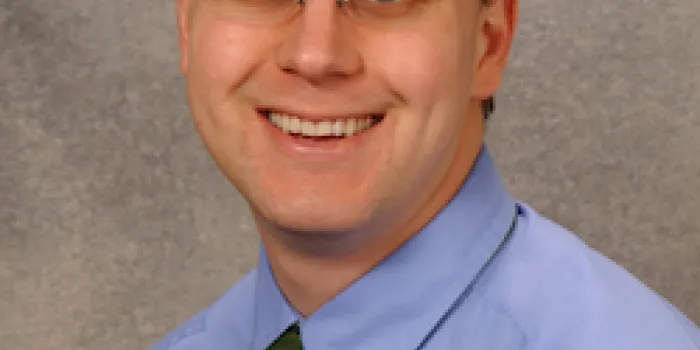HemAware is conducting a series of interviews with recipients of the NHF-Shire Clinical Fellowship. It is funded through the generous support of Shire. The objective of this grant is to increase the number of skilled clinicians committed to providing comprehensive care for individuals with bleeding and clotting disorders and to prepare recipients for academic careers.
This interview was conducted with Brian Branchford, MD. He is a pediatric hematologist at the Children’s Hospital of Colorado in Aurora. The fellowship was funded from 2010 to 2012.
Why did you decide to study medicine?
A sense of personal frustration at not being able to help several family members and friends who were diagnosed with serious illnesses, followed by esteem for the physicians who oversaw their care, cemented Branchford’s decision to pursue a medical career. “I appreciated the physicians who were able to help them,” he says. “I thought it was a nice idea to be able to give that back.” Branchford received his BA degree in biology from Lawrence University in Appleton, Wisconsin, and his medical degree from the University of Wisconsin-Madison.
What initially attracted you to hematology?
Simply put, it made sense, says Branchford. Complicated neuronal pathways and hormonal feedback loops were difficult concepts to grasp, he says. “But with hematology, I could look under the microscope and there it was—these cells are normal, but those are not.” He could visualize the intravascular pathologic process better in hematology than in other specialties. It may have been “directly related to seeing the movie Fantastic Voyage at an early, highly impressionable age,” he says.
How did the training and mentorship you received as an NHF-Shire Clinical Fellow affect your decision to pursue clinical care and/or research in bleeding disorders?
One of Branchford’s mentors for the fellowship, Neil Goldenberg, MD, got him interested in evaluating risk factors for pediatric thrombosis. “When I started working with him, I found out just how much potential there is to move the field forward.” Evaluation, management and prevention of such blood clots have become Branchford’s clinical niche today.
Are you still engaged in the clinical aspects of patient care or bleeding disorders research? In what aspect of care are you most interested?
Although Branchford does six weeks of inpatient service at the Children’s Hospital every year, seeing all manner of patients, the majority of his clinical time is spent with pediatric patients who have bleeding disorders or blood clots. “Most of my patients have had blood clots in an extremity or pulmonary vessel,” he says. The cause could be anything from trauma or injury to surgery or infection, or to a central venous access device. “I’m leading a large group at our hospital, as well as a 74-hospital national group that are both trying to institute prevention standards for this.”
Did your NHF-Shire Clinical Fellowship assist in advancing your own position at your institution? Or did it serve as a building block to further your career in coagulation?
“The latter probably led to the former,” says Branchford. At his institution, the fellows doing oncology research during their second and their years are covered by a training grant from NIH, but not so for the fellows doing hematology research. The NHF-Shire Clinical Fellowship secured his position financially. It involved research in the lab of his mentor, Jorge DiPaola, MD, that was recognized on national and international platforms, reflecting positively on Branchford’s institution.
“The past record of my successful application for this clinical fellowship and the high-quality data (soon to be published) that were generated during its course probably made my section chief more likely to hire me for a faculty position after the fellowship,” Branchford says.
Where do you think bleeding disorders research and clinical care may be headed in the near future? In the next decade?
“The big new thing is long-acting factor replacement products and figuring out what the best options are for particular patients,” says Branchford.
In the next 10 years, he’s placing his bet squarely on gene therapy. “It has the potential to provide an actual cure for the disease,” he says. His institution is planning to take part in a gene therapy trial headed by Paul E. Monahan, MD, at the University of North Carolina at Chapel Hill.
What profession would you be in if you weren’t in medicine?
Without hesitation, Branchford says wildlife photography. “I like to travel, and it seems a reasonable way to get paid for it,” he says with a laugh.

